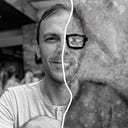Member-only story
Quantum Superposition Explained
Demystifying the science of quantum physics
TL;DR
In quantum physics, objects are mathematically described by adding fractions of classical states together.
In classical physics, objects have clear and well-defined states. For instance, if you flip a coin, it is either heads or tails, but not both simultaneously. Similarly, if a switch is on, it’s on, and if it’s off, it’s off. There’s no in-between. Quantum physics assigns states like these to things, but also other states that don’t have analogs in our everyday experience…but come ever-so-close to seeming like they do.
How did this all come about?
Let’s first recall where quantum superposition arose.
1. Foundations of Quantum States (Early 1900s)
By the early 20th century, scientists like Max Planck, Albert Einstein, and Niels Bohr had already shown that energy and light come in discrete chunks. This led to the notion that particles themselves might not have definite classical properties like position or momentum at all times, a fact spurred on by Lious de Broglie’s…
